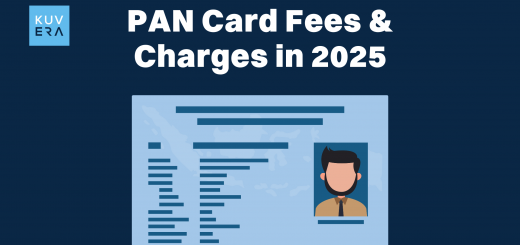In the quest for diversified investment avenues, two intriguing instruments have emerged: Infrastructure Investment Trusts (InvITs) and Real Estate Investment Trusts (REITs). These structures offer a unique opportunity to participate in the growth of infrastructure and real estate sectors without the complexities of direct ownership.
But what exactly are InvITs and REITs, and why are they becoming increasingly popular among investors? Let us find out in this blog below.
InvITs: Investing in Infrastructure’s Backbone
An InvIT, or Infrastructure Investment Trust, is a collective investment scheme designed to pool investments from multiple investors to invest in income-generating infrastructure projects. These projects can include roads, bridges, power transmission lines, and telecommunication towers. The structure of an InvIT resembles that of a mutual fund, with a trustee, a sponsor, and an investment manager.
InvITs are structured to generate stable and predictable cash flows from the underlying infrastructure assets. These cash flows are then distributed to investors as dividends, making InvITs an attractive option for those seeking regular income. The regulatory framework for InvITs, established by the Securities and Exchange Board of India (SEBI), ensures transparency and investor protection.
REITs: Investing in Real Estate’s Potential
A REIT, or Real Estate Investment Trust, is a similar investment vehicle that focuses on income-generating real estate assets. These assets can include commercial office spaces, shopping malls, and warehouses. Like InvITs, REITs pool investments from multiple investors and distribute a significant portion of their income as dividends.
REITs provide investors with an opportunity to participate in the commercial real estate market without the need for substantial capital outlay. They offer liquidity, as units of REITs are traded on stock exchanges, and diversification, as they invest in a portfolio of real estate assets.
The Introduction of Newer Category Mutual Funds
The introduction of newer category mutual funds India that focus on InvITs and REITs has broadened the investment landscape. These funds aim to provide investors with exposure to infrastructure and real estate sectors through a diversified portfolio of InvITs and REITs. This diversification helps to mitigate risk and enhance potential mutual fund returns.
These specialized mutual funds offer a convenient way for retail investors to participate in these sectors, as they can invest smaller amounts compared to direct investments in InvITs and REITs. Additionally, professional fund managers handle the selection and management of the underlying assets, providing expertise and convenience. The mutual fund SIP route also allows for regular investment in these funds.
Investing in InvITs: A Step-by-Step Approach
Investing in InvITs involves a few key steps:
- Research and Due Diligence: Begin by researching different InvITs available in the market. Analyze the underlying infrastructure assets, the sponsor’s track record, and the financial performance of the InvIT.
- Open a Demat and Trading Account: To invest in InvITs, you need a demat and trading account with a registered brokerage firm.
- Place an Order: Once you have identified an InvIT that aligns with your investment goals, place an order through your trading account.
- Monitor Your Investment: Regularly monitor the performance of your InvIT investment and stay updated on any developments related to the underlying infrastructure assets.
Investing in REITs: A Step-by-Step Approach
Investing in REITs follows a similar process:
- Research and Analysis: Conduct thorough research on different REITs, focusing on the quality of their real estate portfolio, the occupancy rates, and the financial stability of the REIT.
- Open a Demat and Trading Account: As with InvITs, you need a demat and trading account to invest in REITs.
- Invest Through IPO or Secondary Market: You can invest in REITs during their initial public offering (IPO) or through the secondary market.
- Regular Portfolio Review: Periodically review your REIT investments to ensure they continue to meet your investment objectives.
InvITs and REITs vs. Direct Commercial or Real Estate Investment
Investing in InvITs and REITs offers several advantages over direct commercial or real estate investment:
- Liquidity: InvITs and REITs are traded on stock exchanges, providing liquidity that is often lacking in direct real estate investments.
- Diversification: InvITs and REITs offer diversification by investing in a portfolio of assets, reducing the risk associated with individual properties.
- Lower Investment Threshold: Investing in InvITs and REITs requires a lower investment amount compared to purchasing commercial or real estate properties.
- Professional Management: InvITs and REITs are managed by professional fund managers with expertise in infrastructure and real estate sectors.
- Transparency: The regulatory framework for InvITs and REITs ensures transparency and disclosure of information, enhancing investor confidence.
- Regular Income: Both InvITs and REITs are designed to distribute a significant portion of their income as dividends, providing investors with a regular income stream.
- Accessibility: Retail investors can access these investment avenues through the stock market, or via mutual fund returns from funds that focus on these assets, without dealing with the complexities of property management.
Direct commercial or real estate investment comes with many complications. Property management, finding tenants, and large capital outlays are a few of the complexities that are avoided when investing in REITs and InvITs.
The Role of SIP investing in InvIT and REIT Mutual Funds
SIP investing can be a valuable tool when investing in mutual funds India that hold InvITs and REITs. It allows for rupee-cost averaging, which can help mitigate the effects of market volatility. This strategy involves investing a fixed amount of money at regular intervals, regardless of the market conditions. This approach can help to accumulate more units when the market is down and fewer units when the market is up, potentially leading to better long-term mutual fund returns.
Wrapping up!
InvITs and REITs represent a new era of investment opportunities, providing access to infrastructure and real estate sectors with relative ease. They offer liquidity, diversification, and professional management, making them attractive options for investors seeking stable income and long-term growth. The specialised mutual funds India that have been introduced, along with the option for mutual fund SIP, make these asset classes even more accessible.
You can unlock the potential of these sectors and enhance your portfolio by understanding the intricacies of InvITs and REITs and adopting a disciplined investment approach. As with any investment, it is crucial to conduct thorough research and seek professional advice to make informed decisions that align with your financial goals
Interested in how we think about the markets?
Read more: Zen And The Art Of Investing
Watch here: Learn about the F&O craze in India












